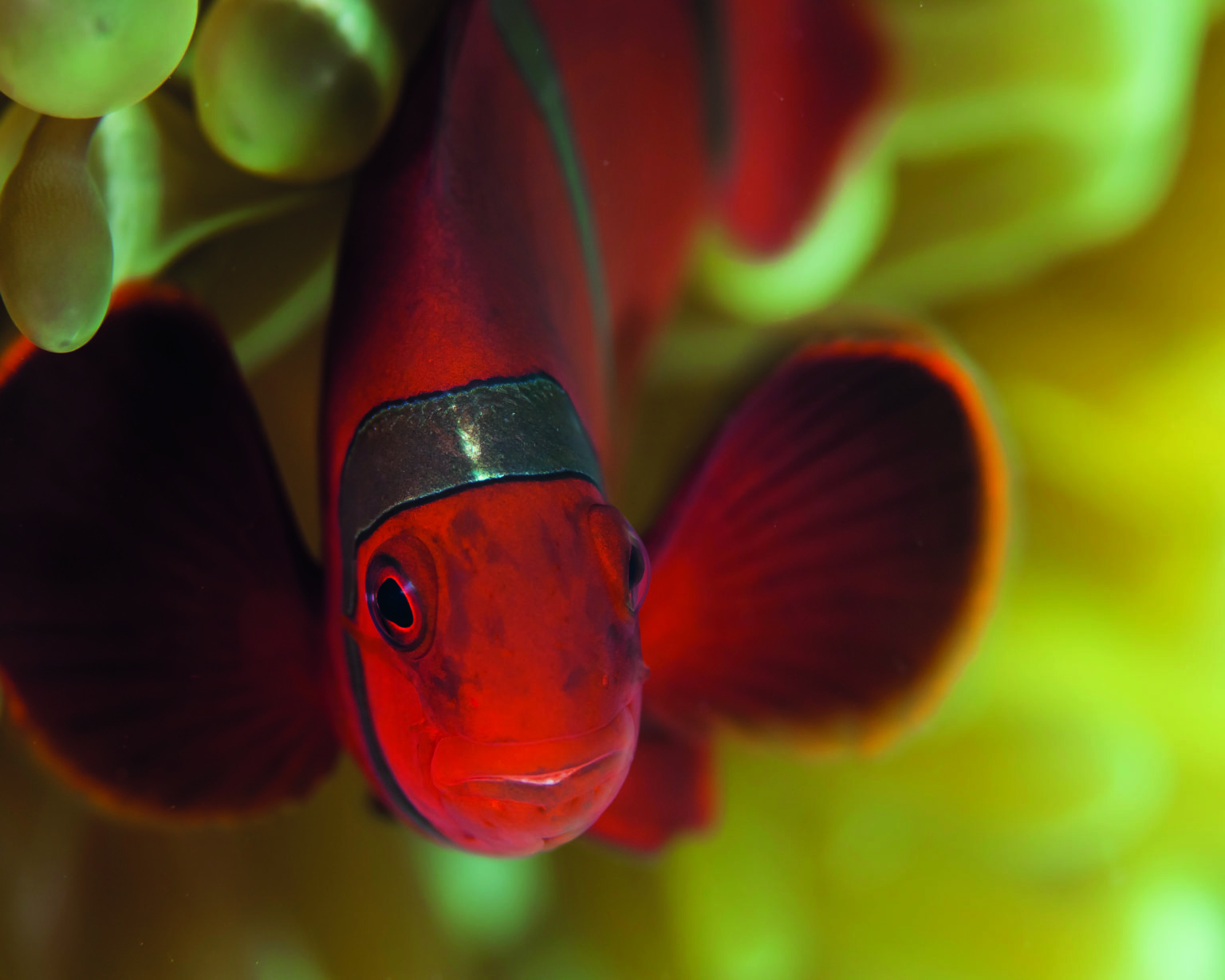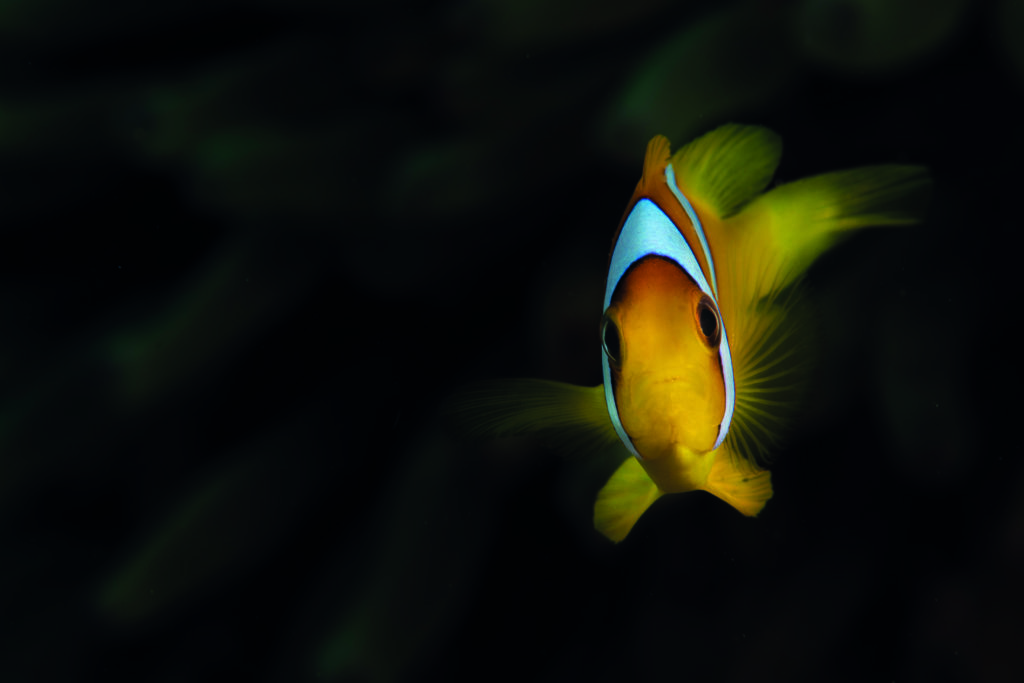This issue, photo pro Mario Vitalini examines various crowd-pleasing subjects you absolutely must have in your portfolio.
Underwater photographers are slightly obsessed with finding rare and unique subjects, the ones that very few have had the chance to photograph. And I’m no exception. But when I show my pictures to friends and family, the photographs that elicit the strongest reactions are not those hard to find, elusive beasts, but rather the classic and well-known subjects.
Let’s focus on five classic crowd-pleasers that, in my opinion, should be in every underwater photographer’s library. This is a warm-water wishlist that will form a solid foundation to your portfolio.
Clownfish
Thanks to Finding Nemo, clownfish have become arguably the most-popular reef residents. Unfortunately, taking a good photo of this charismatic fish can be a bit tricky. They are fast-moving subjects, swimming in and out of their anemone, and rarely stop to pose. The key when photographing clownfish is patience.
It is worth finding the right fish and spending some time with it. As you approach the anemone, clownfish see you as a threat and will try to protect their home. Fortunately, they have a relatively bad memory and after a while calm down. I try to find the right position and composition you want, take a couple of test shots to confirm the background exposure and when everything is ready, just wait for the clownfish to swim into the right position. Fire!
If your clownfish is not sitting on a pretty anemone, you can play with depth of field so you can keep environmental context without the distracting background.
Turtles
Another emotive character is a friendly turtle. It is hard not to smile when you see a picture of these gentle creatures. Generally speaking, turtles are relaxed creatures and fairly easy to approach. When you see one on the reef, swim slowly and don’t make any sudden movements, otherwise it may get spooked. Feeding time is a great time to photograph turtles.
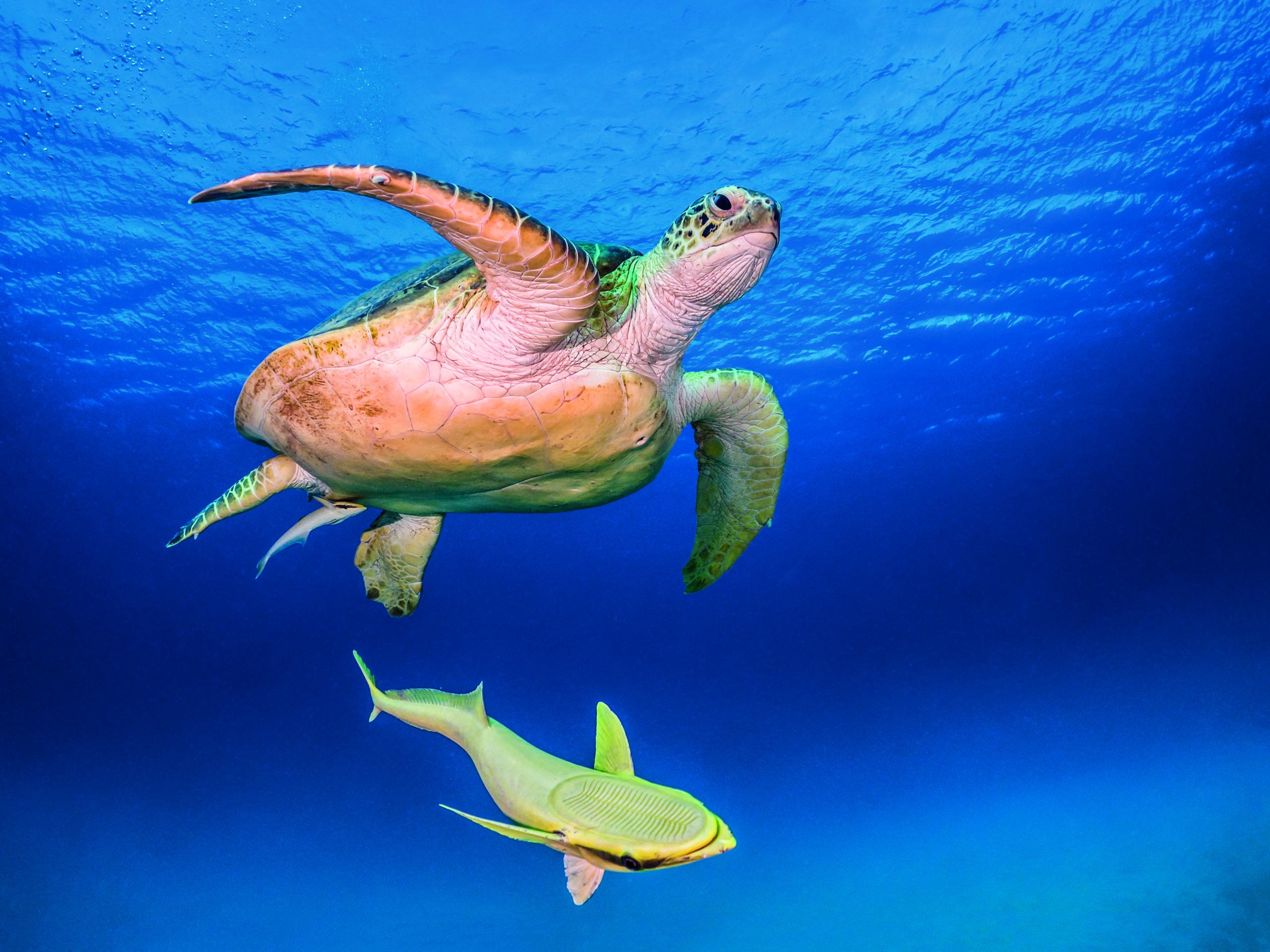
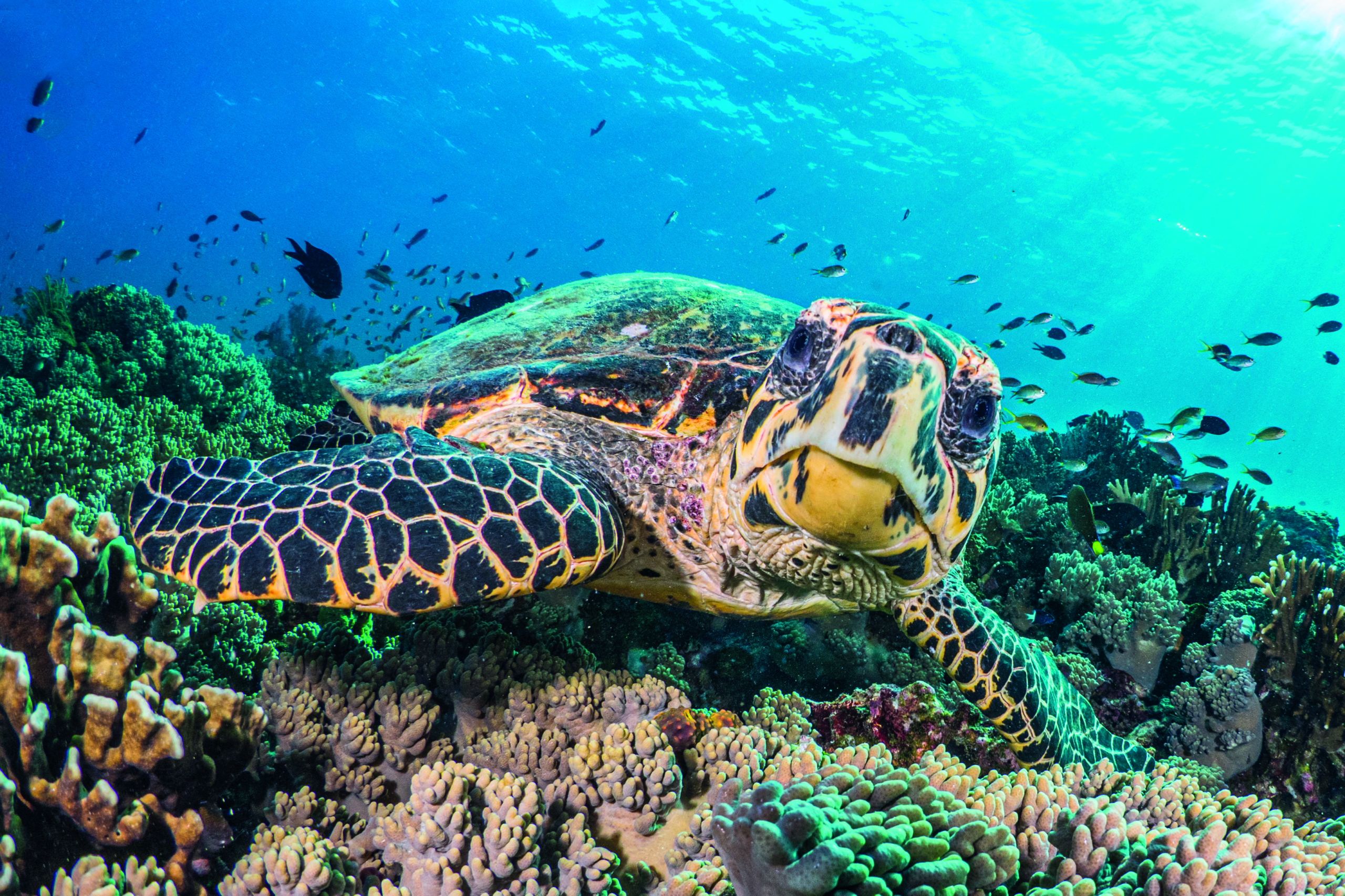
It is not unusual to find them munching on soft corals and when they are eating, they tend to ignore everything that is going on. This is a great opportunity to take a behavioural shot. Do not start taking pictures straight away, often turtles are attracted by their reflection in your dome port. Let the turtle get used to you before you start firing.
Turtles’ undersides are very reflective, so it is essential to reduce the power of your strobes to prevent burning out highlights. Remember to bring your strobes closer to the housing to ensure good lighting as they swim in closer to the camera.
Dolphins
Everyone loves dolphins. Fact. Swimming with them is a common aspiration held by many. Photos of dolphins are evocative and speak to these wants and desires. Their happy faces can speak to you through an image. Often, dolphin encounters happen in very shallow water and dolphins can swim fast.
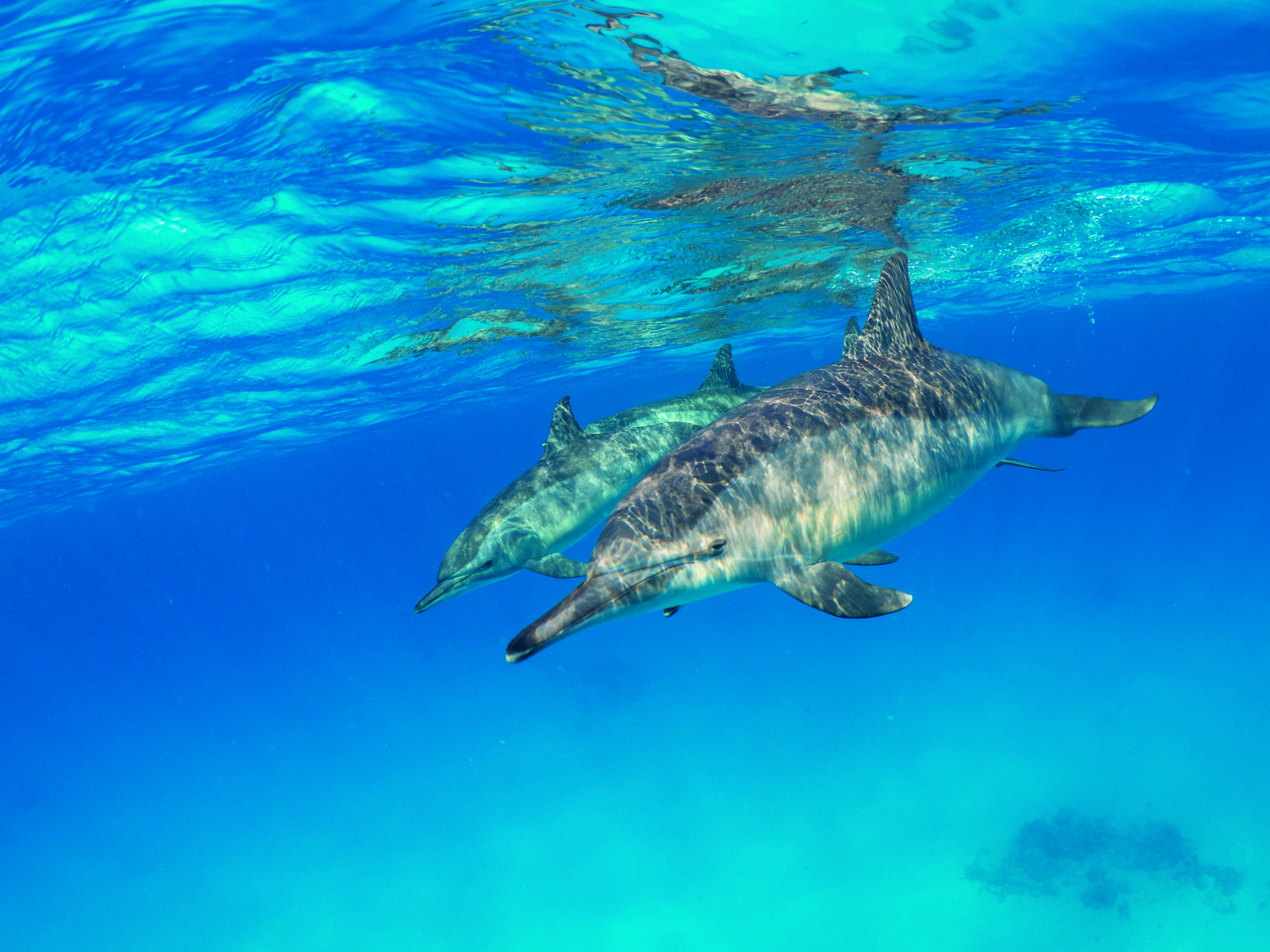
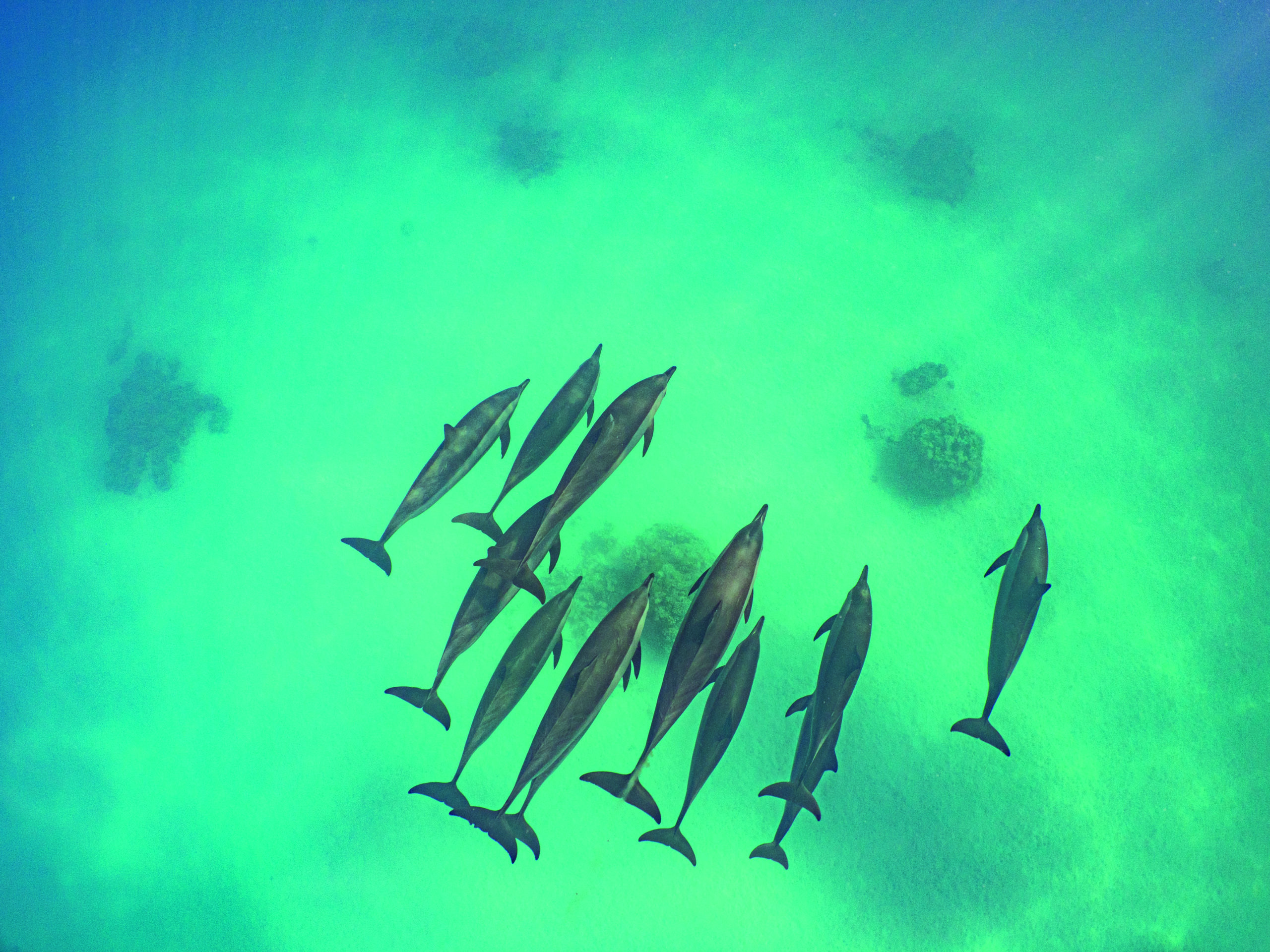
When snorkelling with a pod, strobes are not necessary. By using ambient light, you do not need to worry about sync speeds and therefore you will be able to use a much-faster shutter speed (e.g. 1/320 or faster).
This is essential to freeze the movement of these fast creatures. Even in shallow water and bright conditions, you may need to increase the ISO in order to secure a shutter speed fast enough to capture the moment.
Dolphins benefit from the use of a wide-angle lens. Having a larger field of view allows you to fill the frame from a short distance maintaining a good image quality. Remember, if you choose a fisheye instead of a wide-angle lens, you will need to be much closer.
Both options will give you enough depth of field and more flexibility in terms of aperture settings.
Morays
Not every great subject is what we would call pretty. Morays are one of those fascinating creatures we love to watch, but non-divers often find menacing. Personally, I love their expressive faces and the opportunity for dramatic portraits, even if they have a face only a mother could love.
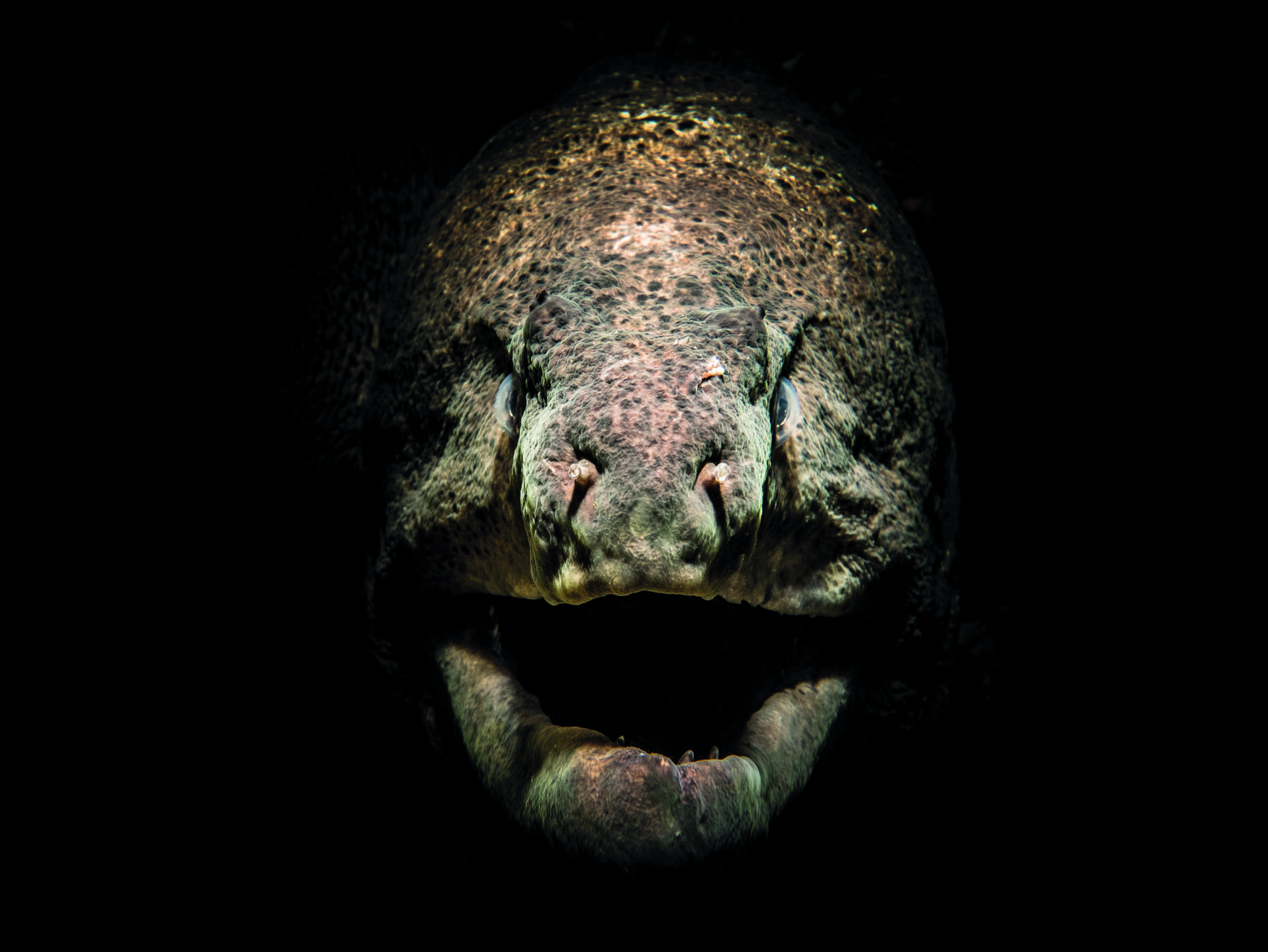
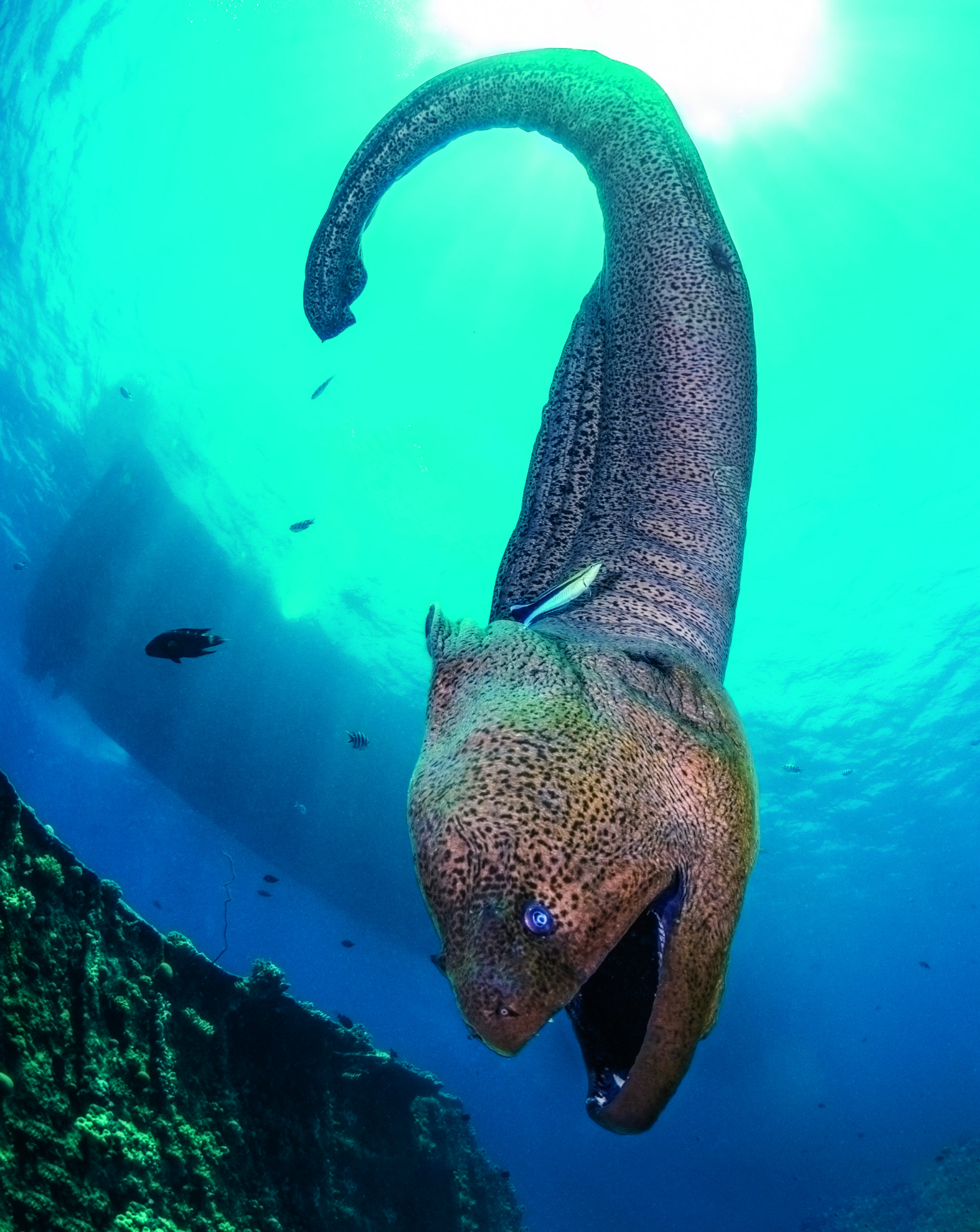
Getting close is not normally a problem, but photographing a moray presents other challenges. Separating the subject from the background is, in my opinion, critical. Morays spend their time in the reef, sticking only their head out. Taking a picture in which the subject is clearly separated from the background involves careful strobe positioning. Inward lighting and snooting are techniques that will help you to achieve this.
With morays, one compositional element that is key is good eye contact. Always try to get the shot at eye level and from the front. For me, simpler compositions are most effective for portraits. If you want a more-contextual shot that shows the moray on the reef, try to look for a behavioural action, or consider using a model as a background element.
Sharks
There is one more creature that always attracts attention. For many years, sharks were portrayed by the mainstream media as evil man-eaters, but fortunately in recent years and thanks to the hard work of different charities and environmental groups, these magnificent creatures are becoming an attraction to admire and not fear.
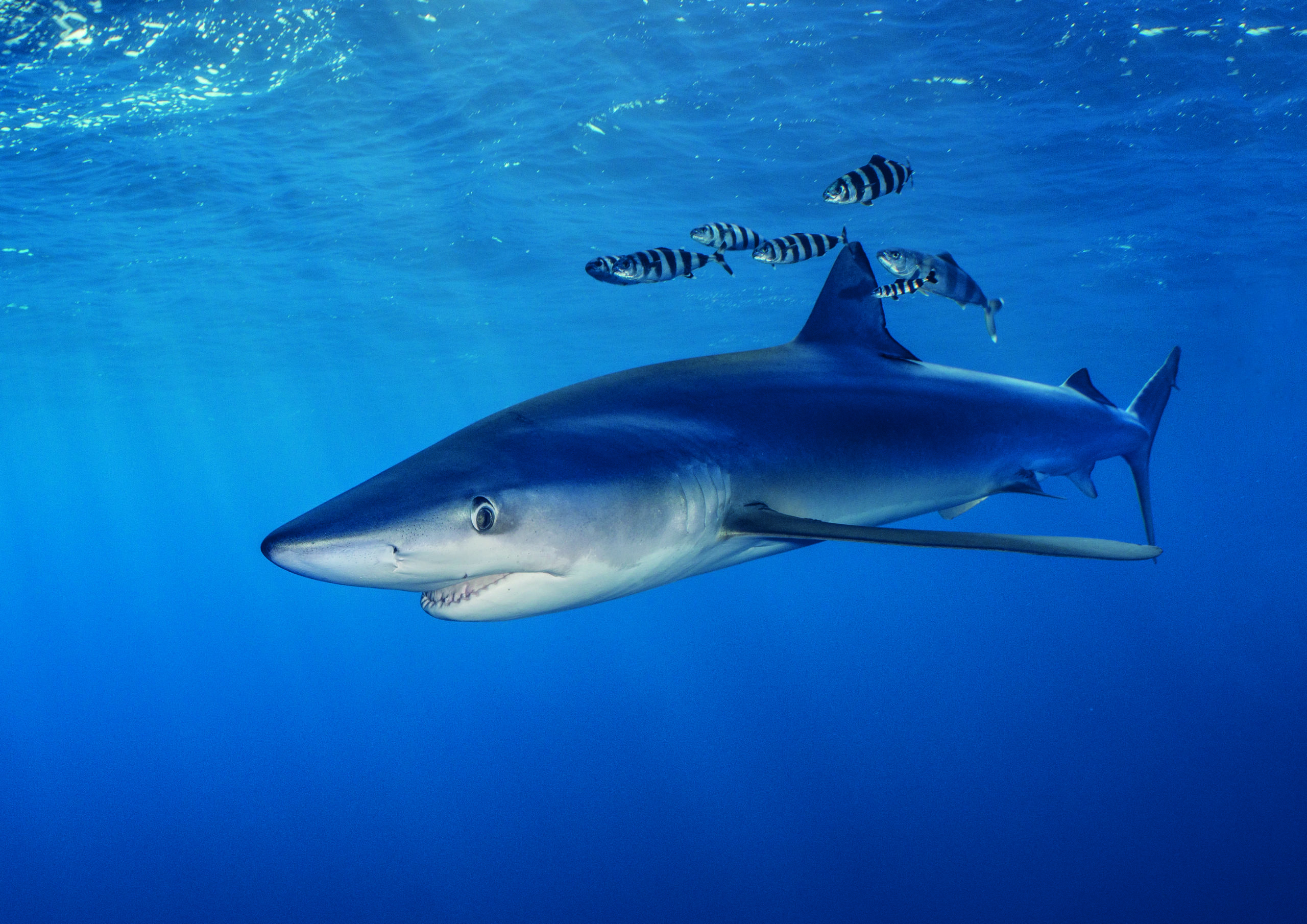
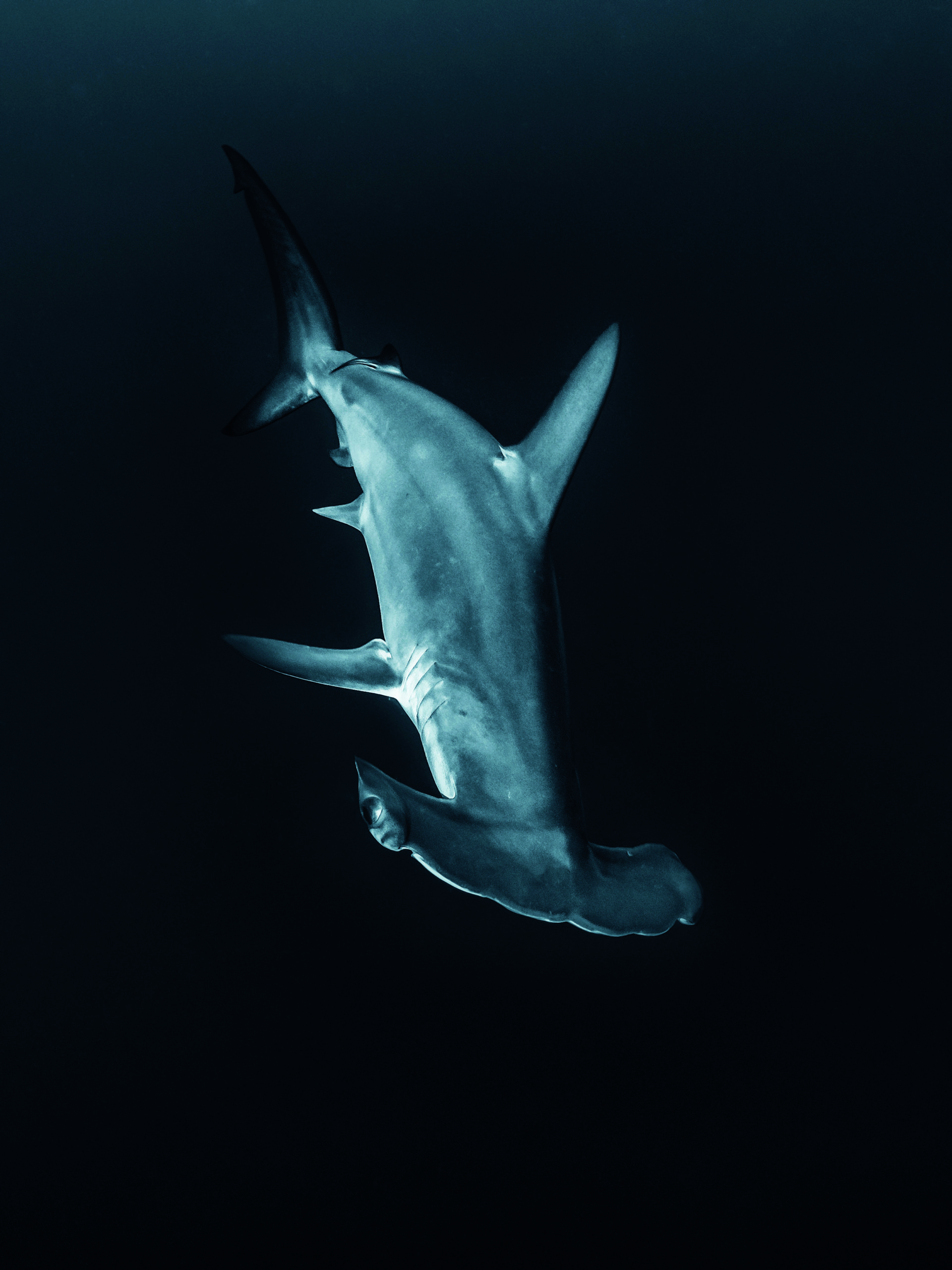
Many divers head to specific destinations for the chance to photograph individual shark species. Overall though, sharks are one of those subjects that can be very forgiving. With the right composition, you can shoot them from above, from behind or pretty much any angle. They can also work very well from far away as part of a larger scene or at close range. So, my advice is to try to beat the excitement and concentrate on the composition.
From a technical point of view, I would say that controlling the strobe power is essential, the underside of sharks is reflective and very easy to over-expose. In terms of position, remember to bring your strobes close to the housing the closer the shark gets to you.
Conclusion
I had the opportunity to photograph plenty of strange critters around the world, but when it comes to share my images, subjects that are familiar, have expressive faces or species that elicit a strong response are the photos that are most popular. Rare is not always better. I never swim past these more-common creatures without pausing to look for a good angle. You never know if that won’t be your next best shot.
Photographs by Mario Vitalini
